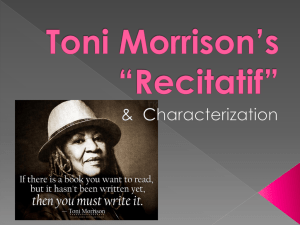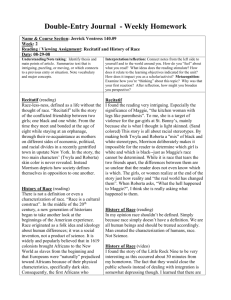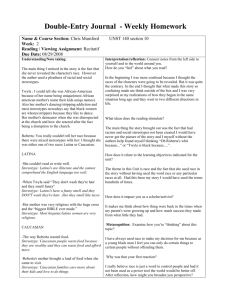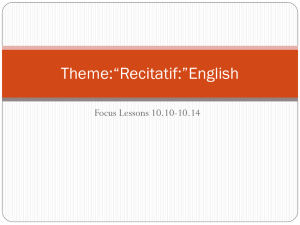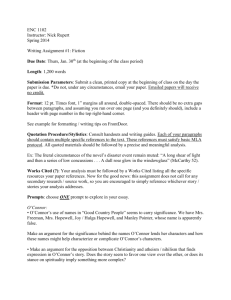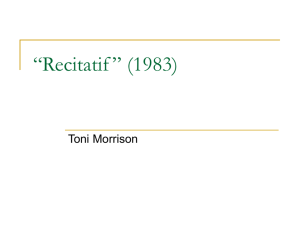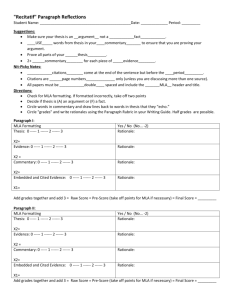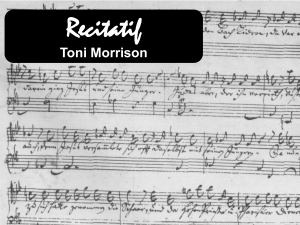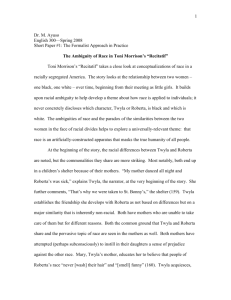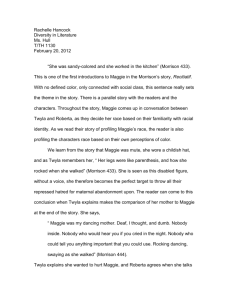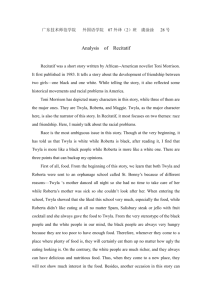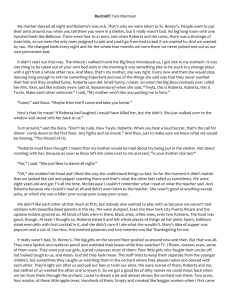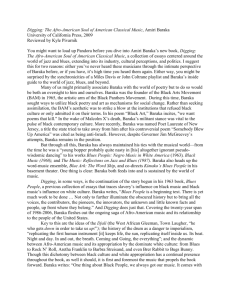Discussion 2.1 - Recitatif
advertisement
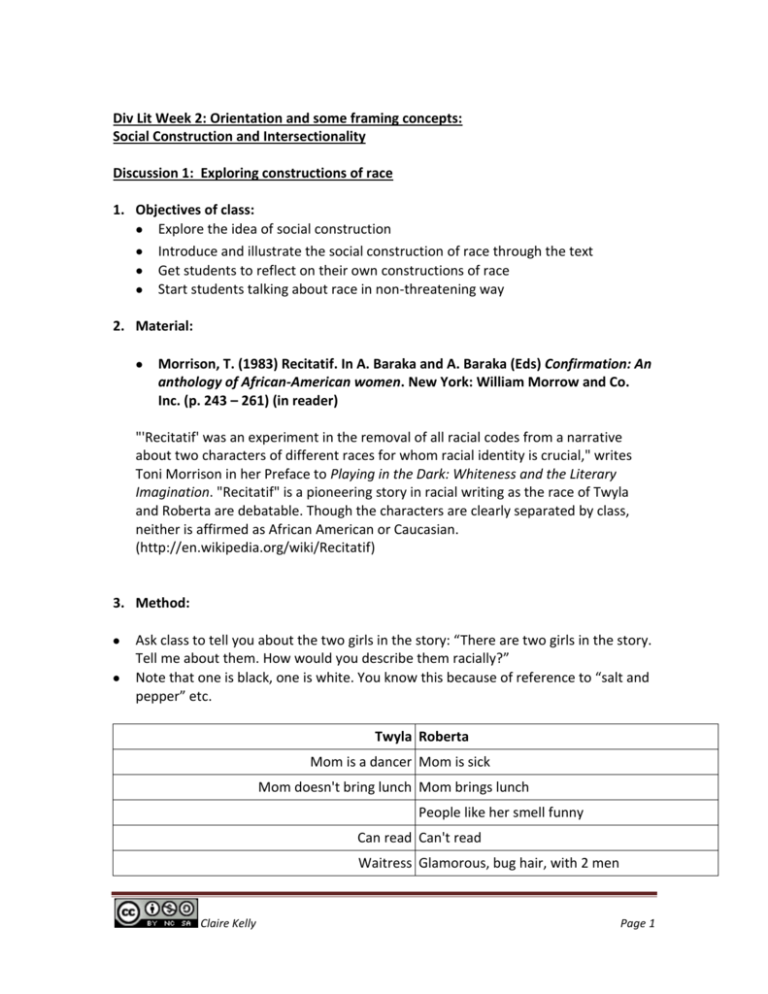
Div Lit Week 2: Orientation and some framing concepts: Social Construction and Intersectionality Discussion 1: Exploring constructions of race 1. Objectives of class: Explore the idea of social construction Introduce and illustrate the social construction of race through the text Get students to reflect on their own constructions of race Start students talking about race in non-threatening way 2. Material: Morrison, T. (1983) Recitatif. In A. Baraka and A. Baraka (Eds) Confirmation: An anthology of African-American women. New York: William Morrow and Co. Inc. (p. 243 – 261) (in reader) "'Recitatif' was an experiment in the removal of all racial codes from a narrative about two characters of different races for whom racial identity is crucial," writes Toni Morrison in her Preface to Playing in the Dark: Whiteness and the Literary Imagination. "Recitatif" is a pioneering story in racial writing as the race of Twyla and Roberta are debatable. Though the characters are clearly separated by class, neither is affirmed as African American or Caucasian. (http://en.wikipedia.org/wiki/Recitatif) 3. Method: Ask class to tell you about the two girls in the story: “There are two girls in the story. Tell me about them. How would you describe them racially?” Note that one is black, one is white. You know this because of reference to “salt and pepper” etc. Twyla Roberta Mom is a dancer Mom is sick Mom doesn't bring lunch Mom brings lunch People like her smell funny Can read Can't read Waitress Glamorous, bug hair, with 2 men Claire Kelly Page 1 Doesn't want to speak to Twyla Jimi Hendrix Poor, live in poor suburb Rich, live in rich suburb Husband a fireman Husband an IBM type Didn't want to be seen with a white/black person Hated it when Twyla touched her hair Had servants Thought Maggie was white Thought Maggie was black Notice class reasoning. For example: Roberta is black. She can't read, smells funny. Then say “So you know she is black because she can't read and smells funny. Do you know she is black? Was there reference to her skin colour?” The answer is NO Ask “But how do you know? What makes you say this girl is white and this one is black? HOW DID YOU DO THAT?” Insert theory: Social signifiers, associations, social resources, which mean “black”.... YOU ARE CONSTRUCTING RACE!! Ask “What happened as you read the story? Can you picture the girls and the women? did their race change at all through the story” Note something about how it worked for you e.g. “They did for me. e.g. I was convinced Roberta was black when they were children, but when Twyla saw her in the diner I saw a white woman... my image of her changed? Why?” Insert theory: The power of social markers, meaning inscribed in neutral bodies.... bodies “change” according to meaning inscribed on them. Claire Kelly Page 2
